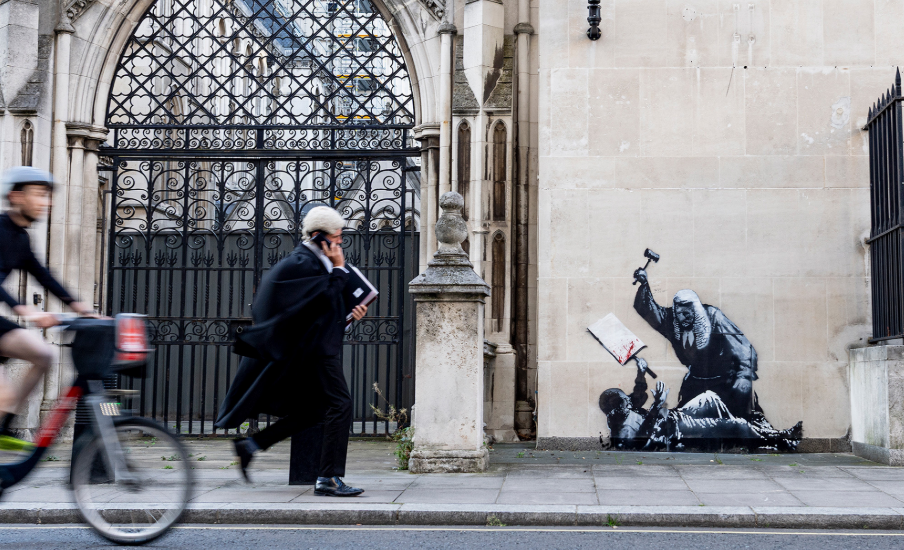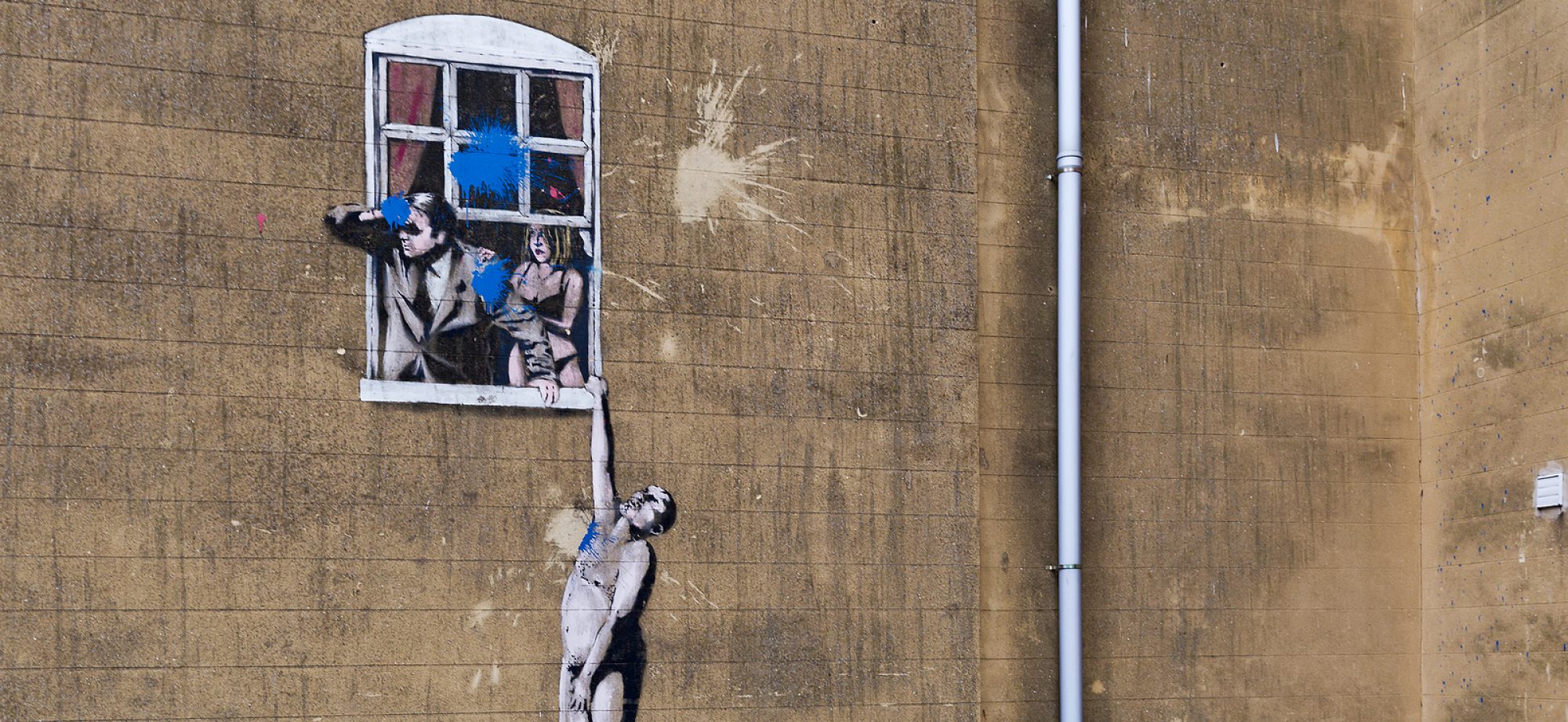
A new mural by Banksy emerged in London on September 8, 2025, only to be quickly removed because of its unapologetically sharp social commentary. The London mural appeared on Banksy’s Instagram with a title “Royal Courts of Justice,” featuring a judge in a traditional wig and gown, raising a gavel over a protester lying on the ground with a blood-spattered placard.
The mural received contradictory reviews, mainly for its starkly negative portrayal of the legal system and justice as such. As a result, it was officially classified as criminal damage, with an ongoing police investigation thereof. Banksy’s work was swiftly removed in compliance with the need for legal protection of the HM Courts & Tribunals Service’s buildings.
Meaning of the latest London mural by Banksy
Banksy is globally known for his critique of government policy, violence, and capitalism, and his latest mural is no exception. Its imagery is highly reminiscent of the recent legal crackdown on the protests of Palestine Action in the UK. Law enforcement authorities arrested and detained hundreds of protesters under the Terrorism Act 2000, banning all activities of this group under the label of a terrorist organization.
Notably, Banksy has been supportive of Palestine advocates before as well. With this mural hinting at the cruel suppression of Palestine Action’s protests, Banksy also painted several attention-grabbing murals on the walls of Gaza buildings in 2015. The artist is known to have provided financial support for the boutique guesthouse in Bethlehem, titled The Walled Off Hotel, built right next to the concrete barrier of Israel along the West Bank.
Banksy’s support for social protest
The recent London mural is by far not the first piece of social protest art. Some analysts of the artist’s creative activity link this work to the 2024 legal crackdown on the protests of Just Stop Oil activists. The group protested against climate change, and many participants received prison sentences of up to 5 years. Therefore, the new mural may obtain a broader meaning of Banksy’s commentary on the sharp stance of British authorities toward protesters and his call for greater freedoms of public self-expression and civil protest.
The very fact of the mural’s destruction with no efforts to remove it from the court’s wall without damage for further sale and charity funding points to the uncompromising stance of the UK legal system toward social protest. With the work’s broad assessment as “angry and direct,” local authorities destroyed it without concern about its financial or cultural value.
